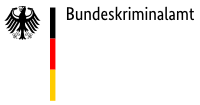
 A cast of a relevant area of a number or letter
A cast of a relevant area of a number or letter
Castings of relevant tool marks on questionable licence plates and corresponding sample reference plates are made with silicone rubber materials and examined under a comparison light microscope.
A Comparison Scanning Electron Microscope which is unique worldwide in the field of forensic science improves the comparison examination of tool marks regarding the depth-of-field and of archiving a higher resolution. These examinations often lead to reliable identification of the source of the mark evidence.
 The comparison scanning electron microscope at the KTI
The comparison scanning electron microscope at the KTI
In examining evidence such as tool marks, shoe and tyre prints, material technology experts usually work with castings in order to preserve the original evidence or to take advantage of the light-microscopic characteristics of such replicas, which are often better than those of the original object.
 Comparison light microscopic sequence of toolmarks from the scene of crime (evidence sample) and test sample
Comparison light microscopic sequence of toolmarks from the scene of crime (evidence sample) and test sample
The replication accuracy and quality of these cast materials are proved with the aid of a laser profilometer.
 Research microscope with parabolic mirror. More than 700 individually controlled LEDs ensure optimum illumination of the test specimen.
Research microscope with parabolic mirror. More than 700 individually controlled LEDs ensure optimum illumination of the test specimen.
An automated tool mark identification system equipped with a microscope and combined parabolic mirror as a data collection station is now under development as means of comparing different tool marks/imprints with reference objects from a collection.
 Forged VIN-number in the engine area of a passenger vehicle
Forged VIN-number in the engine area of a passenger vehicle
Obliterated or altered vehicle identification numbers (VIN) on vehicle body components can be made visible again with the aid of various chemical or physical methods. In addition to the reconstruction of obliterated markings in metallic materials, contrast-enhancing techniques can be used to facilitate the identification of markings on plastics.
 VIN after reconstruction
VIN after reconstruction
The entropy elastic memory effect is utilized in plastics for this restoration technique. Most of the innovative techniques applied in the examination and reconstruction of tool marks/imprints were developed within the framework of research at the KTI.
